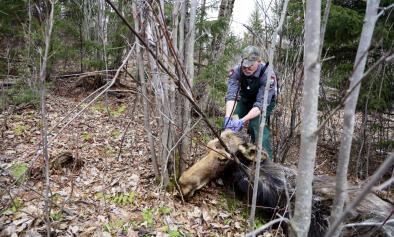Science Source
Increased Arctic sea ice drift alters adult female polar bear movements and energetics
- States that recent reductions in thickness and extent have increased drift rates of Arctic sea ice
- Uses radio-tracking and ice drift data to quantify the influence of increased drift on bear movements
- Models the consequences for energy demands of adult females in the Beaufort and Chukchi seas during two periods with different sea ice characteristics
- Finds that westward and northward drift of the sea ice used by polar bears in both regions increased between 1987–1998 and 1999–2013
- Finds that to remain within their home ranges, polar bears responded to the higher westward ice drift with greater eastward movements, while their movements north in the spring and south in fall were frequently aided by ice motion
- Finds that to compensate for more rapid westward ice drift, polar bears covered greater daily distances by increasing either their time spent active or their travel speed
Related Content
Science Source
| Global Change Biology
Decadal-scale phenology and seasonal climate drivers of migratory baleen whales in a rapidly warming marine ecosystem
Daniel E. Pendleton, Morgan W. Tingley, Laura C. Ganley et al
Headline

May 19, 2022 | Climate Nexus Hot News
Climate Change Great For Winter Ticks, Very Bad For Moose Calves
Science Source
Climate change increases cross-species viral transmission risk
Colin J. Carlson, Gregory F. Albery, Cory Merow et al
Science Source
| Journal of Animal Ecology
Climate change affects bird nesting phenology: Comparing contemporary field and historical museum nesting records
John M. Bates, Mason Fidino, Laurel Nowak-Boyd et al


